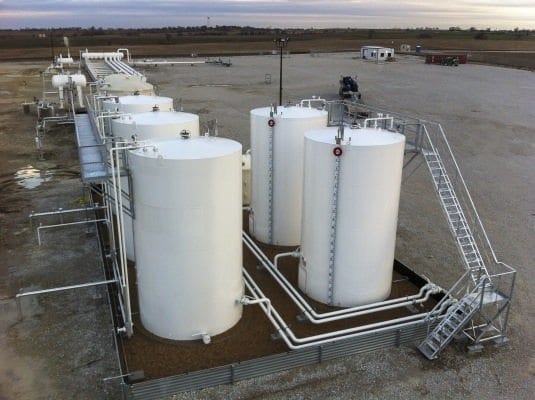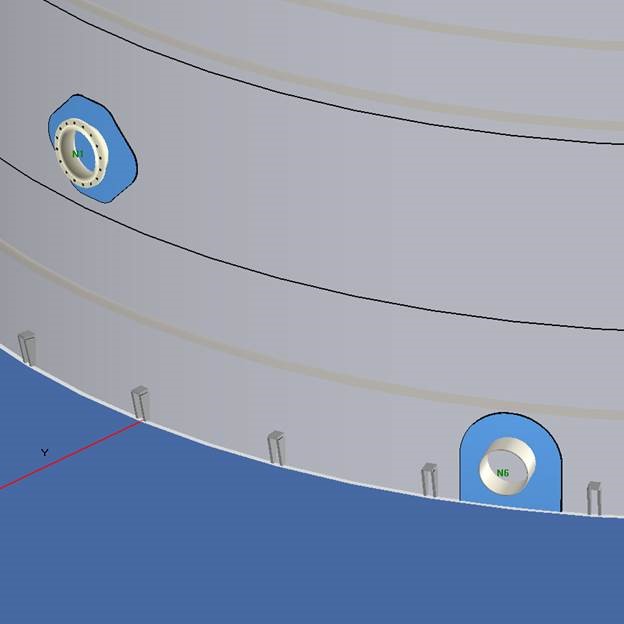All Regarding Welding Inspection: Key Advantages for Your Jobs
Welding evaluation plays an essential function in the building and manufacturing sectors. It ensures that bonded joints fulfill high quality and safety and security requirements. By identifying flaws early, projects can prevent economic losses and considerable hold-ups. Abiding by industry guidelines not just protects the honesty of the last item but also constructs trust fund among stakeholders. Understanding the subtleties of this process discloses fringe benefits that can influence task end results significantly. What are these advantages?
Understanding the Welding Assessment Process
Although welding is an important element in numerous sectors, the evaluation process is important to ensure high quality and safety. This process includes a series of organized analyses developed to determine any kind of potential concerns that might jeopardize the stability of bonded joints. At first, inspectors review welding treatments and certifications to validate conformity with industry criteria.
Following this, visual inspections are performed to analyze the general look and coating of welds. Non-destructive testing techniques, such as radiographic or ultrasonic testing, might likewise be utilized to spot internal defects without harming the material. Documents plays a vital duty, as it supplies a record of assessments and searchings for, confirming traceability and responsibility.
Inevitably, understanding the welding inspection procedure cultivates self-confidence in the quality of the ended up product, lowers the risk of failures, and enhances general task success in different applications, from building to production. API 650 Welding Inspection.
Usual Types of Welding Flaws
Welding flaws can considerably affect the honesty and efficiency of welded frameworks, as they may lead to failures under stress and anxiety or negative problems. Usual types of welding problems consist of fractures, porosity, incomplete blend, and slag inclusion. Cracks can create as a result of thermal anxieties or improper cooling, jeopardizing the joint's strength. Porosity refers to the visibility of gas bubbles trapped in the weld, which can deteriorate the joint and decrease ductility. Insufficient combination takes place when the weld steel does not properly bond with the base material, resulting in weak areas. Slag inclusion happens when non-metallic pollutants become caught within the weld, resulting in a reduction in architectural stability. Identifying these issues early via inspection is vital for keeping quality and making certain security in bonded frameworks. Understanding these typical defects permits improved welding techniques and boosted project end results.
Value of Compliance With Sector Requirements
Compliance with industry standards is vital for maintaining structural stability in welding tasks. Abiding by these requirements not only alleviates responsibility threats yet also boosts the total top quality of the ended up work. This placement cultivates depend on amongst stakeholders and assurances that projects satisfy both security and performance assumptions.
Ensuring Architectural Honesty
Assuring structural stability is paramount in any kind of building or manufacturing job, as adherence to market criteria functions as a foundation for security and reliability. Conformity with these requirements assurances that welding refines meet strenuous specs, which is vital for the longevity of frameworks. Regular welding examinations confirm that materials and strategies align with developed guidelines, avoiding possible failures that might endanger stability. Furthermore, following industry criteria promotes uniformity in quality, which is crucial for maintaining public count on in building and construction methods. By focusing on architectural stability via thorough adherence to criteria, organizations can boost the general performance of their jobs, bring about more secure environments and long term possession life expectancies. Inevitably, this dedication reflects an aggressive method to quality control in welding practices.
Lowering Obligation Threats
Abiding by sector criteria considerably minimizes obligation dangers associated with welding tasks. Conformity with established standards assurances that welds satisfy security and performance standards, reducing the possibility of failings that might cause crashes or lawsuits. This aggressive approach not just secures the labor force yet likewise safeguards the economic passions of the company. Ineffective practices or poor inspections can result in expensive repairs, legal disagreements, and damages to credibility. By implementing extensive welding examinations, business show their commitment to top quality and safety, eventually decreasing direct exposure to potential claims. Furthermore, adherence to guidelines reinforces depend on among customers and stakeholders, as it indicates a commitment to keeping high criteria throughout the job lifecycle. Reducing obligation threats is necessary for long-term business sustainability.
Enhancing Task Quality
Extensive welding assessments not only reduce obligation dangers but likewise play a crucial function in boosting general task top quality. By sticking to sector requirements, these inspections guarantee that welds meet specified criteria for durability, security, and stamina. Conformity with established standards helps recognize defects early, lowering the possibility of costly rework or project delays. Furthermore, constant quality assurance cultivates trust fund why not check here among stakeholders, consisting of clients and governing bodies, which can bring about repeat organization and positive references. Ultimately, a dedication to high-quality welding methods not only boosts the integrity of the last product yet additionally maintains the online reputation of the organization included. Subsequently, complete evaluations offer as a cornerstone for effective and lasting job outcomes.
Advantages of Very Early Detection of Issues
Early discovery of welding issues uses significant advantages, especially pertaining to expense savings on repair work. By recognizing troubles prior to they rise, organizations can enhance the architectural honesty of their projects. This aggressive approach not just decreases monetary expenditures however likewise promotes safety and security and reliability in welded frameworks.
Expense Cost Savings on Repairs
Spotting welding issues quickly can cause considerable price financial savings on repair work. Early identification of flaws permits targeted treatments, minimizing the level of damages and avoiding expensive, considerable repairs later. When problems are resolved during the first phases of a project, resources are made use of much more efficiently, reducing both labor and product costs. Furthermore, prompt assessments can protect against job hold-ups, which frequently sustain additional expenses. By remedying problems early, firms can stay clear of the monetary burden related to rework, guarantee claims, and possible security hazards. Eventually, buying aggressive welding assessments promotes a much more cost-effective strategy to project management, making sure that budget plans continue to be undamaged while maintaining the quality and integrity of the last product.
Improved Architectural Integrity
Making certain the structural honesty of bonded elements depends upon the prompt identification of potential concerns. Early discovery throughout the welding assessment process permits for the prompt rectification of defects such as splits, voids, or incorrect combination. Addressing these problems immediately not just improves the stamina and resilience of the weld yet likewise minimizes the danger of disastrous failings throughout the service life of the structure. Normal inspections add to an extra dependable assessment of weld top quality, making certain compliance with market requirements. By prioritizing welding examinations, project managers can maintain a greater level of security and performance, eventually bring about effective job outcomes. Enhanced architectural integrity reflects the dedication to high quality and adherence to ideal practices in welding.
Cost-Effectiveness of Welding Inspections
While many companies might view welding assessments as an additional cost, they frequently confirm to be an affordable financial investment over time. By identifying issues early, these examinations can prevent costly repair services or substitutes that might develop from unseen concerns. This proactive strategy not just conserves money however also decreases job hold-ups, guaranteeing that timelines are followed.

Additionally, premium welding evaluations contribute to boosted performance, bring about fewer rework circumstances and boosted performance. The reduction in product waste and labor expenses connected with remodeling defective welds includes to the economic benefits.
Investing in extensive assessments also boosts the overall high quality of the end product, which can bring about enhanced customer satisfaction and repeat organization. Ultimately, the preliminary check my source costs connected with welding examinations are usually outweighed by the long-term financial savings and advantages they give, making them a wise option for any kind of welding job.
Enhancing Safety And Security and Dependability in Welding Projects

Welding examinations play an essential function in improving safety and security and reliability within welding jobs, as they methodically identify prospective hazards and weaknesses in welds. By utilizing certified inspectors, companies can ensure that welding processes abide by market requirements and regulatory demands. This aggressive method reduces the danger of weld failings, which can result in accidents, pricey repair services, and project hold-ups.
Assessments offer essential documentation that shows conformity and high quality guarantee, fostering count on between stakeholders. Normal assessments during numerous job phases permit for the timely detection of issues, making it possible for corrective actions prior to they escalate. Additionally, the insights gained from assessments add to continuous enhancement in welding practices, boosting general task end results. Inevitably, durable welding inspection methods not only secure employees but likewise guard financial investments, ensuring that tasks are completed efficiently and satisfy the highest security and reliability requirements.
Often Asked Concerns
What Credentials Should a Welding Inspector Have?
A welding inspector ought to possess pertinent qualifications, such as Qualified Welding Examiner (CWI), in addition to extensive expertise of welding procedures, codes, and materials. API 650 Welding Inspection. Experience in the field and solid analytical skills are additionally necessary for efficient inspections
How Commonly Should Welding Inspections Be Performed?
Welding examinations ought to be carried out routinely, generally before, during, and after the welding process. The frequency might depend upon task specifications, governing needs, and the intricacy of the welds to ensure structural honesty and security.
Can Welding Inspections Be Carried Out From Another Location?
Welding examinations can without a doubt be executed remotely, using innovative innovations such as drones, cams, and ultrasonic screening equipment - API 650 Website Welding Inspection. This technique enables for reliable tracking while lessening the demand for physical existence at the website
What Equipment Are Used in Welding Inspections?
Welding assessments make use of various tools, consisting of ultrasonic testers, magnetic bit testers, visual inspection tools, radiographic equipment, and calipers. Each device serves a details function to assure weld honesty, quality, and conformity with sector requirements.
Exactly how Do I Choose a Welding Assessment Solution?

To choose a welding inspection solution, one ought to evaluate credentials, experience, and accreditations. In addition, examining customer testimonials and requesting detailed service summaries can aid ensure the picked solution satisfies certain task requirements effectively.
By focusing on welding assessments, job supervisors can preserve a higher degree of security and performance, ultimately leading to effective job end results. Welding assessments play an essential function in enhancing safety and dependability within welding jobs, as they methodically recognize possible risks and weaknesses in welds. A welding inspector need to have appropriate accreditations, such as Qualified Welding Inspector (CWI), along with comprehensive understanding of welding codes, materials, and processes. Welding evaluations must be carried out frequently, commonly in the past, during, and after the welding procedure. Welding examinations utilize numerous devices, consisting of ultrasonic testers, magnetic particle testers, aesthetic assessment devices, radiographic equipment, and calipers.